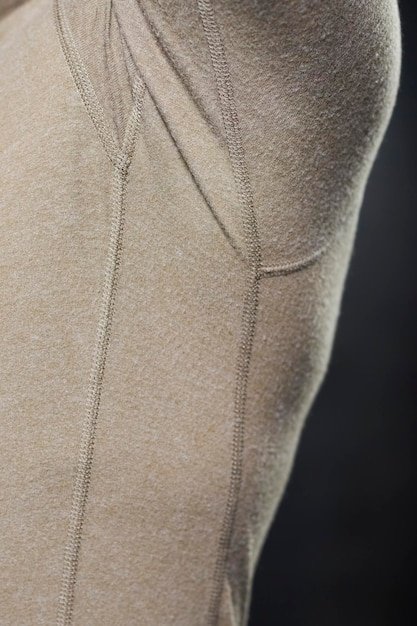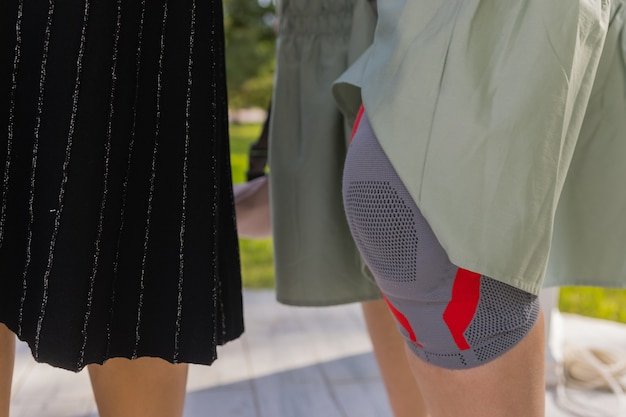Sustainable dyes and fabrics are revolutionizing DIY fashion, offering eco-conscious crafters resources to create stylish, environmentally friendly garments while minimizing their impact on the planet.
Dive into the world of sustainable dyes and fabrics for DIY fashion enthusiasts seeking eco-friendly alternatives. Discover resources and techniques to create beautiful, environmentally conscious clothing.
Exploring Sustainable Fabrics for DIY Fashion
Choosing the right fabric is the first step towards a more sustainable DIY fashion practice. But what makes a fabric sustainable? It’s about more than just being natural; it’s about the entire lifecycle, from the raw materials to the disposal.
Let’s explore some excellent choices for eco-conscious sewing projects.
Organic Cotton
Grown without synthetic pesticides or fertilizers, organic cotton is a popular choice. Its production supports biodiversity and reduces exposure to harmful chemicals for farmers and the environment.
Hemp
Hemp is a highly sustainable fiber that requires little water and no pesticides to grow. It’s also incredibly strong and durable, making it ideal for clothing, bags, and home décor projects.

Linen
Made from flax, linen is another sustainable option that requires less water and pesticides compared to conventional cotton. It’s also breathable and gets softer with each wash.
- Consider Tencel/Lyocell: Made from sustainably harvested wood pulp, Tencel is known for its soft texture and closed-loop production process, minimizing waste.
- Look for Recycled Fabrics: Give new life to discarded materials by using recycled polyester (rPET) made from plastic bottles or recycled cotton from textile scraps.
- Upcycle Existing Textiles: Before buying new fabric, explore upcycling old clothes, sheets, or curtains into new creations.
- Prioritize Natural Fibers: Opt for natural fibers like bamboo, wool (ethically sourced), and silk (peace silk is a good option) over synthetic ones.
Ultimately, choosing sustainable fabrics requires a bit of research and awareness. By prioritizing materials that are eco-friendly and ethically produced, you can make a positive impact with your DIY fashion projects.
Understanding Sustainable Dyes
Dyeing fabrics can have a significant environmental impact. Traditional dyeing processes often involve harsh chemicals and heavy metals that pollute water sources and harm ecosystems. Fortunately, there are sustainable alternatives available for DIY enthusiasts.
Let’s examine some eco-friendly dyeing options that you can use at home.
Natural Dyes from Plants
Using plants to dye fabrics is an ancient practice that’s making a comeback. Natural dyes can be derived from flowers, fruits, vegetables, roots, and barks.
Indigo Dyeing
Indigo, derived from the indigo plant, creates beautiful shades of blue. It requires a special dyeing process called vat dyeing, but the results are stunning.
Food Waste Dyes
Don’t throw away those onion skins, avocado pits, or coffee grounds! They can be used to create unique and beautiful dyes. Onion skins yield yellows and oranges, avocado pits produce pinks and tans, and coffee grounds create browns.

Low-Impact Synthetic Dyes
If natural dyes aren’t your thing, consider using low-impact synthetic dyes. These dyes are designed to be less harmful to the environment than traditional synthetic dyes.
- Choose Fiber Reactive Dyes: These dyes form a strong bond with the fabric, requiring less water and energy during the dyeing process.
- Look for Dyes Certified by Oeko-Tex: This certification ensures that the dyes have been tested for harmful substances and are safe for human health and the environment.
- Use Cold Water Dyes: Cold water dyes require less energy to use, reducing your carbon footprint.
- Dispose of Dye Waste Responsibly: Never pour dye waste down the drain. Instead, contact your local waste management facility for proper disposal instructions.
By choosing sustainable dyeing methods, you can minimize your environmental impact and create beautiful, unique fabrics for your DIY fashion projects.
DIY Projects with Sustainable Materials
Now that you’re familiar with sustainable fabrics and dyes, let’s explore some DIY project ideas that make use of these materials. From simple beginner projects to more advanced creations, there’s something for everyone.
Let’s spark your creativity with some eco-friendly DIY fashion inspiration.
Reusable Shopping Bags
Replace single-use plastic bags with reusable shopping bags made from organic cotton, hemp, or linen. These bags are durable, washable, and can be customized with natural dyes or fabric paint.
Upcycled Denim Jacket
Give an old denim jacket a new lease on life by adding patches made from repurposed fabrics, embroidering designs with sustainable thread, or dyeing it with natural dyes.
Zero-Waste Dress
Challenge yourself to create a dress with zero fabric waste. Use a pattern designed for minimal waste, or experiment with draping and piecing techniques to utilize every scrap of fabric.
Sustainable Accessories
Make scarves, hats, and jewelry using sustainable materials like organic cotton yarn, recycled beads, and natural dyes. These accessories are both stylish and eco-friendly.
By incorporating sustainable materials into your DIY projects, you can create unique, environmentally conscious pieces that reflect your personal style and values.
Resources for Sourcing Sustainable Materials
Finding sustainable fabrics and dyes can sometimes be a challenge. However, there are many online and brick-and-mortar stores that specialize in eco-friendly materials. These resources can help you source the materials you need for your DIY projects.
Here are some places where you can find sustainable materials:
Online Marketplaces
Websites like Etsy, Indie Goods, and Fair Indigo feature independent sellers and artisans who offer a wide range of sustainable fabrics, dyes, and supplies.
Specialty Fabric Stores
Look for local fabric stores that specialize in organic, natural, and recycled fabrics. These stores often carry a curated selection of high-quality materials and can provide expert advice on sustainable sewing techniques.
Thrift Stores and Secondhand Shops
Don’t overlook thrift stores and secondhand shops as a source of sustainable materials. You can often find vintage fabrics, upcycled clothing, and other treasures that can be repurposed for your DIY projects.
- Check for Certifications: Look for fabrics and dyes that are certified by organizations like GOTS (Global Organic Textile Standard), Oeko-Tex, and Bluesign.
- Read Product Descriptions Carefully: Pay attention to the fiber content, origin, and dyeing process of the materials you’re considering.
- Ask Questions: Don’t hesitate to contact the seller or manufacturer with any questions you have about the sustainability of their products.
- Support Local Businesses: Whenever possible, choose to buy from local businesses that prioritize sustainability.
With a little research and effort, you can find the sustainable materials you need to bring your DIY fashion dreams to life.
Tips for Sustainable DIY Fashion Practices
Beyond choosing sustainable fabrics and dyes, there are many other ways to make your DIY fashion practices more environmentally friendly. Small changes in your sewing habits, crafting techniques, and care routines can make a big difference in reducing your impact on the planet.
Here are some tips for adopting sustainable DIY fashion practices:
Plan Your Projects Carefully
Before you start a new project, take the time to plan it out carefully. This will help you avoid mistakes, reduce fabric waste, and ensure that you’re using your materials efficiently.
Use Every Scrap of Fabric
Don’t let those fabric scraps go to waste! Use them to make small accessories, patches, or lining for your projects. You can also save them for future quilting or collage projects.
Repair and Mend Your Clothes
Instead of throwing away damaged or worn clothing, try repairing and mending them. Simple sewing techniques can extend the life of your clothes and keep them out of the landfill.
Wash and Care for Your Clothes Properly
Follow the care instructions on your garments and wash them in cold water whenever possible. Avoid using harsh detergents and fabric softeners, which can damage fabrics and pollute waterways.
- Air Dry Your Clothes: Whenever possible, air dry your clothes instead of using a dryer. This will save energy and prolong the life of your garments.
- Store Your Clothes Properly: Store your clothes in a cool, dry place away from direct sunlight to prevent fading and damage.
- Donate or Sell Unwanted Clothes: If you have clothes that you no longer wear, donate them to a local charity or sell them online.
- Consider a Capsule Wardrobe: Create a capsule wardrobe with a few versatile pieces that can be mixed and matched to create a variety of outfits.
By adopting these sustainable DIY fashion practices, you can minimize your environmental impact and contribute to a more circular and responsible fashion industry.
The Future of Sustainable DIY Fashion
The future of DIY fashion is undoubtedly sustainable. As consumers become more aware of the environmental and social impacts of the fashion industry, the demand for eco-friendly alternatives will continue to grow. This will drive innovation in sustainable materials, dyeing techniques, and production methods.
Looking ahead, here are some trends we can expect to see in the sustainable DIY fashion space:
Increased Use of Innovative Materials
We’ll see the development and adoption of new sustainable materials made from waste products, agricultural residues, and other renewable resources.
Advancements in Natural Dyeing Technologies
Researchers will continue to explore new and improved methods for extracting and applying natural dyes, making them more accessible and efficient for DIY enthusiasts.
Greater Collaboration and Community Engagement
The sustainable DIY fashion community will continue to grow and connect, fostering collaboration, knowledge sharing, and mutual support.
Emphasis on Transparency and Traceability
Consumers will demand more transparency and traceability in the supply chain, wanting to know where their materials come from and how they’re produced.
- Focus on Education and Awareness: There will be a greater emphasis on educating consumers about the benefits of sustainable fashion and providing them with the tools and resources they need to make informed choices.
- Integration of Technology: Technology will play a key role in enabling sustainable fashion practices, with the development of apps, platforms, and tools that help consumers track their environmental impact and make more responsible purchasing decisions.
- Support for Small-Scale Artisans and Makers: Consumers will increasingly seek out and support small-scale artisans and makers who are committed to sustainable and ethical production practices.
- Shift Towards Circular Economy Principles: The fashion industry will move towards a more circular economy model, where products are designed for durability, repairability, and recyclability.
By embracing these trends and continuing to push for positive change, we can create a more sustainable and just fashion future for all.
| Key Point | Brief Description |
|---|---|
| 🌱 Sustainable Fabrics | Organic cotton, hemp, and linen reduce environmental impact. |
| 🌿 Natural Dyes | Plant and food waste dyes offer non-toxic color options. |
| 🧵 DIY Projects | Reusable bags, upcycled denim, and zero-waste dresses promote sustainability. |
| ♻️ Resources | Online marketplaces and specialty stores provide materials. |
Frequently Asked Questions
▼
▼
▼
▼
▼
Conclusion
As you explore the world of sustainable dyes and fabrics, you’ll discover endless possibilities for creating eco-friendly fashion. By choosing sustainable materials, adopting responsible practices, and supporting ethical businesses, you can make a positive impact on the planet and express your personal style with confidence.